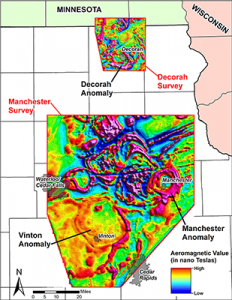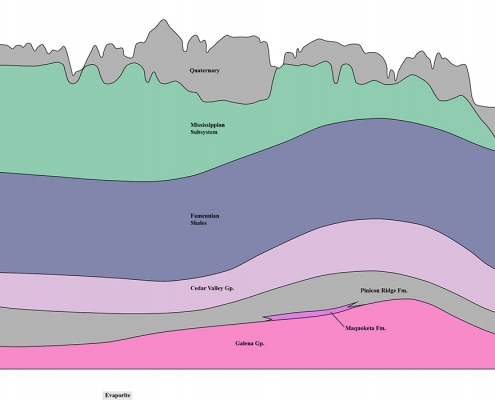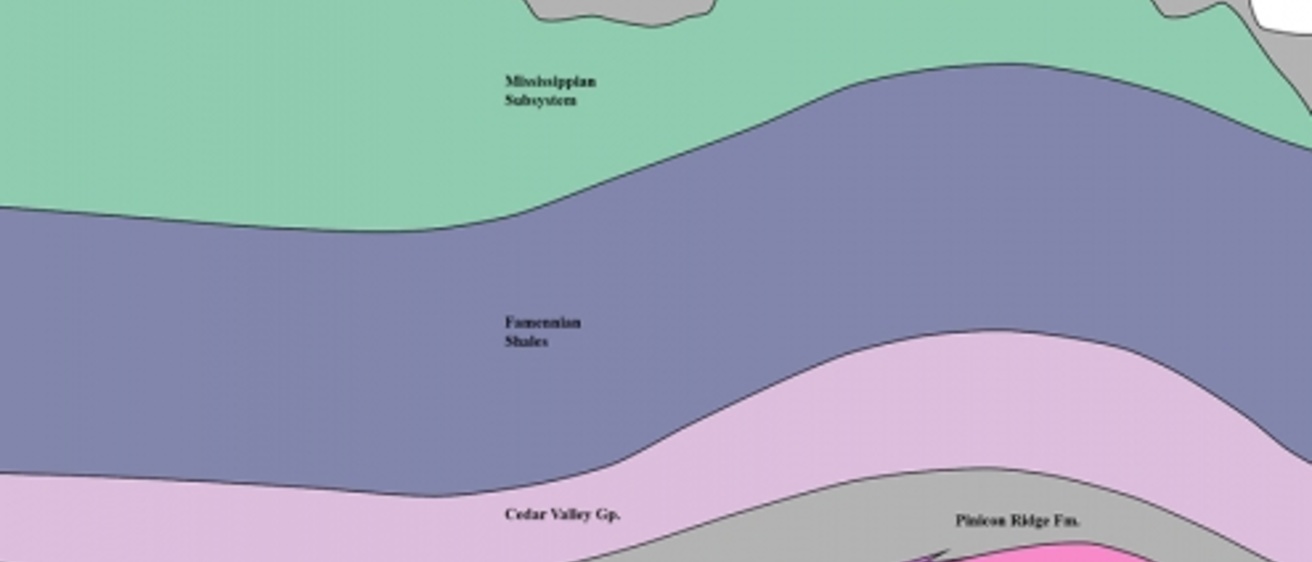Iowa’s varied mining history likely began in the 17th century when Native Americans, followed by French explorers, extracted lead and zinc ore in the Dubuque area.
Mining for clay and coal peaked in the early 20th century but declined sharply as plastic tile lines replaced clay tiles and the use of Iowa’s high-sulfur coal ceased in the 1990s. Quarrying limestone and dolomite for dimensional stone and cement products has been a staple of Iowa’s mining industry for more than a century. Iowa is also one of the top 10 gypsum-producing states in the United States. However, the future of mining in Iowa may be locked in Precambrian-age crystalline rocks buried deep beneath northeastern Iowa.
Projects
Critical Minerals in Iowa

Background: The Northeast Iowa Intrusive Complex (NEIIC) is a series of anomalies, known as “plutons,” that could host valuable mineral deposits. The NEIIC is thought to be related to the Midcontinent Rift System that hosts several economic mineral deposits in the Lake Superior region.
Goal: To learn about potential mineral deposits in northeast Iowa
IGS Strategies: Collect core samples and conduct more geophysical surveys of northeastern Iowa to gain a better understanding of the deeply buried NEIIC.
The IGS and the University of Iowa are conducting research to determine the age of the NEIIC. Researchers are looking for minerals in rock core samples collected from a hole drilled in 1963 near Elkader, Iowa, that can be used for age dating.
If the age of these rock core samples is close to 1.1 billion years old, then the NEIIC could be linked to other economically valuable deposits in the Lake Superior region.
Mineable Deposit Study

Location: Southeast Iowa
Background: Mineable deposits lie beneath the rolling countryside of southeastern Iowa. The target deposits are more than 500 feet below ground and can be discontinuous.
Goals: Analyze existing drilling data to characterize mineable deposits.
IGS Strategies: Conduct a desktop survey of the depth, thickness, and lateral extent of these deposits. Use maps and geologic cross-sections based on existing drilling data to characterize mineable deposits. In addition, log drilling samples to identify target formations, interpret drilling logs, geologic mapping, and report findings.
Contact Us

Ryan Clark
Geologist
MS, University of Iowa
340D Trowbridge Hall
ryan-j-clark@uiowa.edu
319-335-4024
